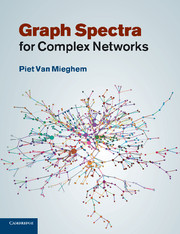Preface
Published online by Cambridge University Press: 01 March 2011
Summary
During the first years of the third millennium, considerable interest arose in complex networks such as the Internet, the world-wide web, biological networks, utility infrastructures (for transport of energy, waste, water, trains, cars and aircrafts), social networks, human brain networks, and so on. It was realized that complex networks are omnipresent and of crucial importance to humanity, whose still augmenting living standards increasingly depend on complex networks. Around the beginning of the new era, general laws such as “preferential attachment” and the “power law of the degree” were observed in many, totally different complex networks. This fascinating coincidence gave birth to an area of new research that is still continuing today. But, as is often the case in science, deeper investigations lead to more questions and to the conclusion that so little is understood of (large) networks. For example, the rather simple but highly relevant question “What is a robust network?” seems beyond the realm of present understanding. The most natural way to embark on solving the question consists of proposing a set of metrics that tend to specify and quantify “robustness”. Soon one discovers that there is no universal set of metrics, and that the metrics of any set are dependent on each other and on the structure of the network.
Any complex network can be represented by a graph. Any graph can be represented by an adjacency matrix, from which other matrices such as the Laplacian are derived.
Information
- Type
- Chapter
- Information
- Graph Spectra for Complex Networks , pp. ix - xiiPublisher: Cambridge University PressPrint publication year: 2010
